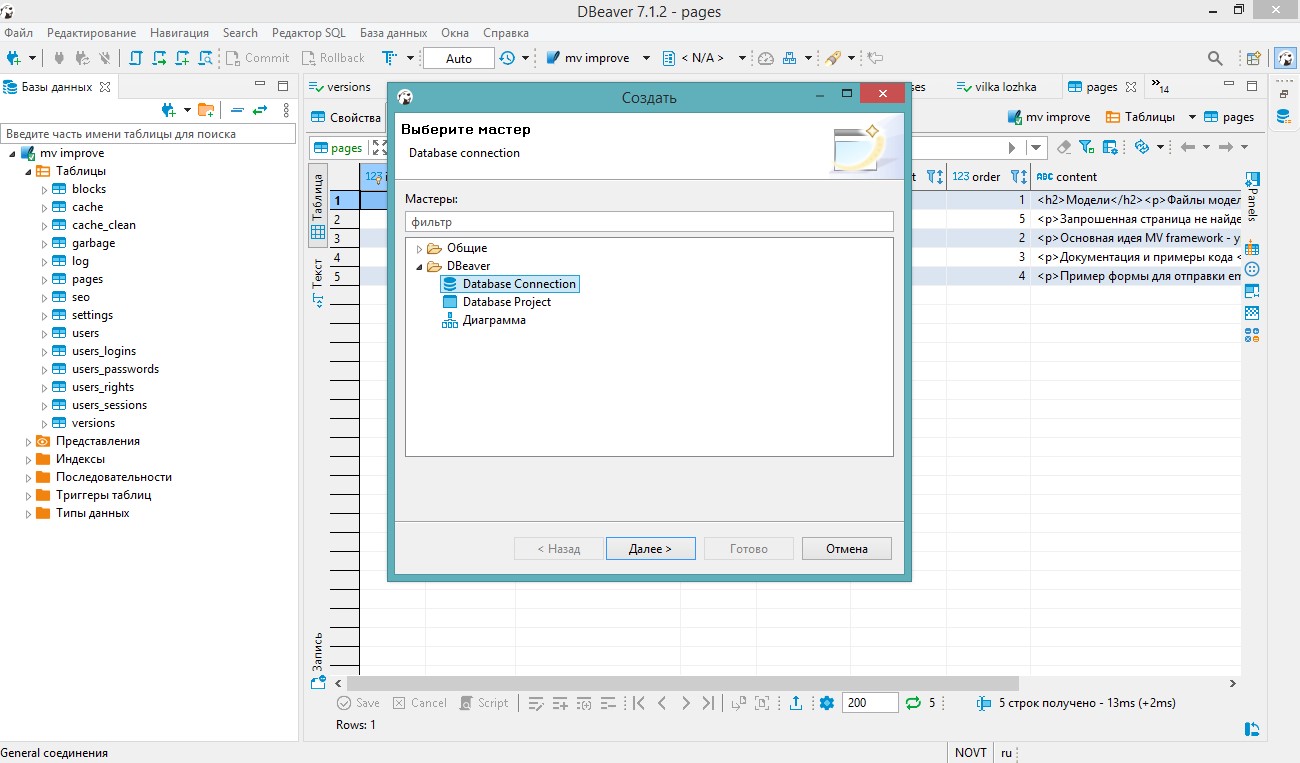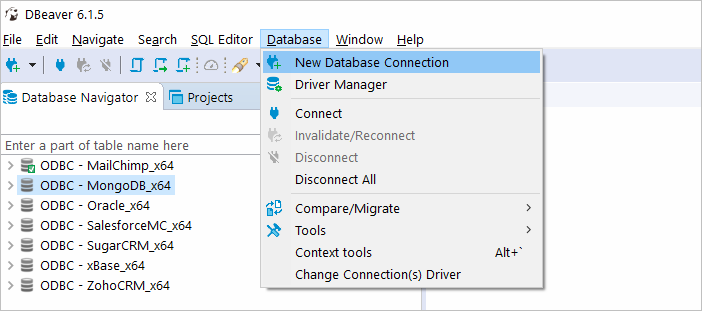From a Dbeaver issue on github, it's not possible. Serge-rider commented on Nov 18, 2019 You cannot use SSH with SQLite. SQLite is embedded database, there is no such thing as SQLite server. DBeaver database interface. We recommend using DBeaver, an open source Universal database interface that can read a variety of database formats (MySQL, MariaSQL, SQlite) Using the DBeaver interface to read the PR 2 SQLite database. Dbeaver - Sqlite does not detect unique key on a table despite primary key being present - Stack Overflow Sqlite does not detect unique key on a table despite primary key being present. Dbeaver - Sqlite does not detect unique key on a table despite primary key being present - Stack Overflow Sqlite does not detect unique key on a table despite primary key being present.
| SELECT TrackId, Name, AlbumId, MediaTypeId, GenreId, Composer, Milliseconds, Bytes, UnitPrice FROM Track; |
| SELECT*FROM Track GROUP BY AlbumId; |
| SELECT*FROM Track WHERE AlbumId =3; |
| SELECT AlbumId, ROUND(SUM(UnitPrice), 2) as total FROM Track GROUP BY AlbumId HAVING AlbumId =3ORDER BY total DESC; |
| SELECT AlbumId, ROUND(SUM(UnitPrice), 2) as total FROM Track GROUP BY AlbumId ORDER BY AlbumId; |
| SELECT*FROM Track; |
| SELECT*FROM Genre; |
| SELECT* |
| FROM Genre |
| INNER JOIN Track ONGenre.GenreId=Track.GenreId; |
| SELECTGenre.GenreId, Track.AlbumId, Genre.Name, ROUND(SUM(UnitPrice), 2) as total |
| FROM Genre |
| INNER JOIN Track ONGenre.GenreId=Track.GenreId |
| GROUP BYTrack.AlbumIdHAVINGTrack.AlbumId=3ORDER BY total DESC; |
| SELECTGenre.GenreId, Genre.Name, ROUND(SUM(UnitPrice), 2) as total |
| FROM Genre |
| INNER JOIN Track ONGenre.GenreId=Track.GenreId |
| GROUP BYGenre.GenreIdHAVINGGenre.GenreId=5ORDER BY total DESC; |
| SELECTGenre.GenreId, Genre.Name, ROUND(SUM(UnitPrice), 2) as total |
| FROM Genre |
| INNER JOIN Track ONGenre.GenreId=Track.GenreId |
| GROUP BYGenre.GenreIdORDER BY total DESC; |
commented Dec 1, 2019

DBeaver Overview
DBeaver is a free, open source multiplatform database management tool and SQL client for developers and database administrators. DBeaver can be used to access any database or cloud application that has an ODBC or JDBC driver, such as Oracle, SQL Server, MySQl, Salesforce, or MailChimp. Devart DBeaver provides you with the most important features you'd need when working with a database in a GUI tool, such as:
- SQL queries execution
- Metadata browsing and editing
- SQL scripts management
- Data export/import
- Data backup
- DDL generation
- ER diagrams rendering
- Test data generation
- BLOB/CLOB support
- Database objects browsing
- Scrollable resultsets
The tool comes in two editions — Community and Enterprise. Enterprise Edition supports NoSQL databases, such as MongoDB or Cassandra, persistent query manager database, SSH tunneling, vector graphics (SVG) and a few other enterprise-level features. Note though that you can access a MongoDB database from DBeaver Community Edition using the respective Devart ODBC driver. For the purposes of this guide, we'll use the Community Edition of DBeaver to retrieve data from SQLite via the Open Database Connectivity driver.
Creating an ODBC Data Source to Use SQLite Data in DBeaver

- Click the Start menu and select Control Panel.
- Select Administrative Tools, then click ODBC Data Sources.
- Click on the System DSN tab if you want to set up a DSN name for all users of the system or select User DSN to configure DSN only for your account.
- Click the Add button and double-click Devart ODBC Driver for SQLite in the list.
- Give a name to your data source and set up the connection parameters.
- Click the Test Connection button to verify that you have properly configured the DSN.

When using ODBC driver for SQLite with DBeaver, SQL_WVARCHAR data types may be displayed incorrectly in DBeaver. To prevent this, you need to set the string data types to Ansi either in the Advanced Settings tab of the driver configuration dialog or directly in the connection string (String Types=Ansi) — all string types will be returned as SQL_CHAR, SQL_VARCHAR and SQL_LONGVARCHAR.
Connecting to SQLite Data from DBeaver via ODBC Driver for SQLite
Follow the steps below to establish a connection to SQLite in DBeaver.
- In the Database menu, select New Database Connection.
- In the Connect to database wizard, select ODBC and click Next.
- Enter the previously configured DSN in the Database/Schema field.
- Click Test Connection. If everything goes well, you'll see the Success message.
Viewing SQLite Database Objects and Querying Data
You can expand out the database structure in DBeaver's Database Navigator to visualize all the tables in SQLite database. To view and edit the data in a table, you need to right-click on the target table name and select View data.The content of the table will be displayed in the main workspace.
Dbeaver Sqlite Password

Dbeaver Sqlite Primary Key

Dbeaver Sqlite Driver Download
If you want to write a custom SQL query that will include only the necessary columns from the table, you can select New SQL Editor in the SQL Editor main menu. Create your query and run it by clicking Execute SQL Statement to view the results in the same window.
Sqlite Dbeaver Free
| © 2015-2021 Devart. All Rights Reserved. | Request Support | ODBC Forum | Provide Feedback |
